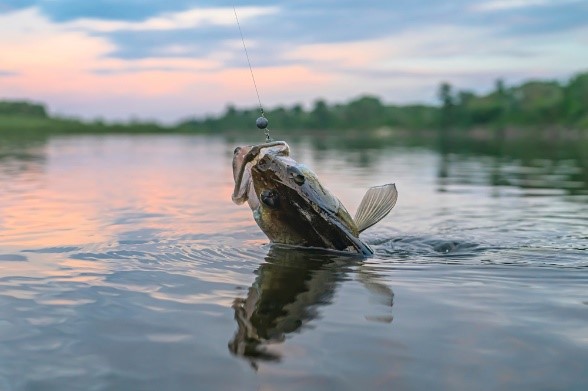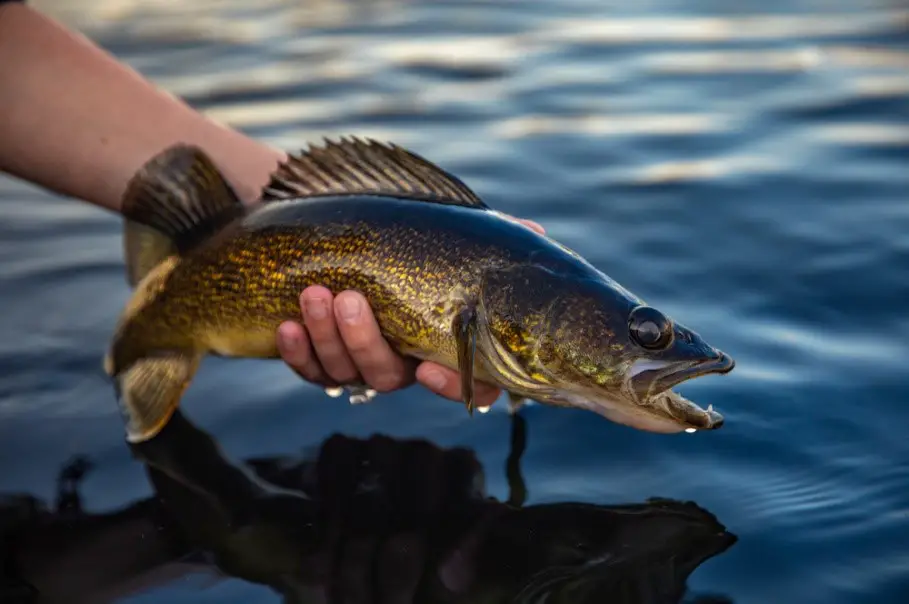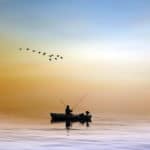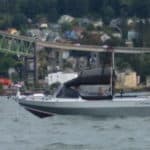Fishing for walleye is a pursuit that many fishermen look forward to each year. Walleye are a fun fish to catch because of their picky bait preference. It’s more of a mental game than a physical challenge to catch walleye. They don’t put up a huge fight when hooked, but it’s still a challenge to land one on your boat since they’re so fickle about what they eat.
Walleye eat insects, leeches, worms, and small fish. It can be tricky to know what bait to throw that the walleye are striking that day. The time of year you fish will also contribute to what type of bait you should throw.
The best time of year to fish for walleye anglers to head out is spring and fall. Walleye like to spend their time in shallow water with plenty of tree or vegetation coverage. Trolling through these areas makes it easier to pursue these unique fish.
What Are Walleye?
Walleye are schooling fish and will typically stay within a school of other similarly sized walleye. They don’t like to stay out in open water during the day. They prefer cool, deep water and will move to areas of water that have natural coverage with trees, downed logs, or other natural coverage.
They are most active at night, but that doesn’t mean you can’t successfully troll for walleye during the day. In fact, you will likely have the most success trolling for walleye during the day because of how often walleye move to find their perfect location within the water.
Walleye are arguably one of the tastiest fish, too. This is one of the main reasons that anglers often fish for walleye, but you can only enjoy this tasty fish if you’re able to land one.
Why You Need to Troll for Walleye
Listen, you don’t have to troll for walleye. You can throw your bait from the bank or the boat as long as you want, but you’ll likely come up empty-handed unless you have a lot of time and patience. When you troll for walleye, you significantly increase the chances of landing one.
Trolling for walleye is a great way to reach those walleye that are schooling between vegetation and various water depths on their journey for the perfect place to spend the day. Walleye are more active at night, so if they’re on the move, they’re likely moving to a new spot or trying to find food.
You don’t have to be an experienced angler to troll for walleye. It’s a method that can help even the most novice fishermen land walleye.
The Step By Step Guide on How to Troll for Walleye

Step One: Determine Depth
The very first step when trolling for walleye is to determine the depth of the walleye. You will need to use a fish finder to locate the walleye. The fishfinder will indicate how deep the walleye are in the water below. How deep the walleye are will tell you how much line you need to cast when you’re trolling.
Step Two: Stock Up on Tackle
Walleye feed on a variety of bait. They enjoy worms, insects, and small fish, so you’ll want to rig your lines with these types of tackle. We recommend rigging one tackle for each line that you’re throwing. Then, you’ll be able to tell what bait the walleye are striking and which ones they are avoiding.
Make sure you have a stockpile of walleye tackle, including harness worms, spinnerbait, crankbait, plastic worms, and minnows (live or artificial). Walleye feed on all of these baits; it’s just a matter of which one they’re striking that day.
Step Three: Rig Your Lines
When walleye fishing, you’ll need to rig your lines with the right amount of weight so that the bait sinks enough to reach the walleye’s depth but not too much weight that causes it to sink too deep.
If you don’t have a depth finder to know how deep you need to fish, you can use a crankbait that dives through the water as you reel. Crankbaits are fishing lures shaped like minnows. Small baitfish typically have two sets of treble hooks with a bill that will cause the bait to dive in the water as it is reeled. Rapala crankbaits or Rapala Husky Jerk are almost always fail-proof. They’re easy to rig and get the job done.
Walleye fishing tip: We recommend rigging at least one line with a crankbait even if you have a depth finder because they have proven successful when walleye fishing.
Other than crankbait, you should rig your remaining lines with nightcrawler harnesses, spinnerbaits, or live bait like a minnow. Just make sure to account for the weight of the baitfish when you cast so that you know just how deep the baitfish will be sinking.
Step Four: Start Walleye Trolling
Before you get on the water, make sure your trolling motor batteries are charged! We’re only telling you this because we’ve been there before, too. You get on the lake and begin walleye trolling, only to discover that your trolling motor batteries haven’t held a charge. If you’re not sure which batteries you should choose, check out our reviews of the top electric trolling motor batteries.
You’ll only need a trolling speed between .5 mph and 1.5 mph if you’re on calm water. However, if you’re trolling upstream or in stronger currents, you’ll need to up your trolling speed.
The faster you go, the higher your bait will rise in the water, so you may need to add weight or extend your line if you have to troll more than 2 mph.
Step Five: Secure Your Rods
Use a rod holder to secure each rod to the boat as you’re trolling. Be mindful of the angle that your trolling rod is being held. For example, if the trolling rod is angled at 45°, the bait will drop quicker than if the rod is at a 60° angle.
Watch your rods to see if they start to bend. When you see the tip of the trolling rod bend or start bouncing, you’ll know you’re getting a bite from some active fish. Pull the rod off the rod holder and start reeling! You just may have a walleye on the other end of the line!



